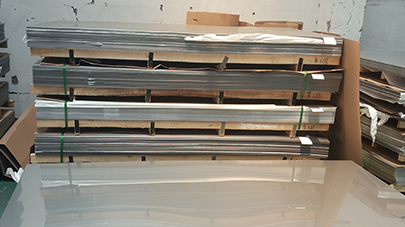
Performance of stainless steel plate
Source:WUXI Oumeidei Metal Products Co., Ltd Time:03 June 2020
Corrosion resistance
The stainless steel plate has the ability to resist general corrosion similar to the unstable nickel-chromium alloy 304. Prolonged heating in a temperature range of chromium carbide may affect alloys 321 and 347 in harsh corrosive media. Mainly used in high temperature applications, which require materials to have strong anti-sensitization properties to prevent intergranular corrosion at lower temperatures.
High temperature oxidation resistance
Stainless steel plates have high temperature oxidation resistance, but the oxidation rate will be affected by inherent factors such as exposure environment and product form.
Physical properties
The total heat transfer coefficient of a metal depends on other factors besides the thermal conductivity of the metal. In most cases, the film heat dissipation coefficient, rust and metal surface conditions. Stainless steel can keep the surface clean, so its heat transfer is better than other metals with higher thermal conductivity. Liaocheng Suntory Stainless Steel provides technical standards for stainless steel plates.Corrosion resistance of stainless steel plates, bending workability and toughness of welded parts, and high-strength stainless steel plates with excellent stamping workability of welded parts and manufacturing methods. Specifically, it contains C: 0.02% or less, N: 0.02% or less, Cr: 11% or more and less than 17%, the appropriate content of Si, Mn, P, S, Al, Ni, and satisfy 12≤Cr Mo 1.5Si≤ 17. 1≤Ni 30(CN) 0.5(Mn Cu)≤4, Cr 0.5(Ni Cu)3.3Mo≥16.0, 0.006≤CN≤0.030, the stainless steel plate is heated to 850~1250℃, and then carried out at 1℃/s Heat treatment for cooling above the cooling rate. In this way, it can be a high-strength stainless steel plate with a volume fraction of 12% or more of martensite, high strength of 730 MPa or more, corrosion resistance and bending workability, and weld heat affected zone toughness. Reusing Mo, B, etc. can significantly improve the stamping performance of the welded parts.
Oxygen plus gas flames cannot cut stainless steel plates because stainless steel is not easily oxidized.
-
Production and sales status and product structure analysis of China's stainless steel industryChina cancelled stainless steel products after export rebates, the price why not down
-
World Iron and Steel Association: In October 2021, the global crude steel output decreased by 10.6%China cancelled stainless steel products after export rebates, the price why not down
 Language
Language






